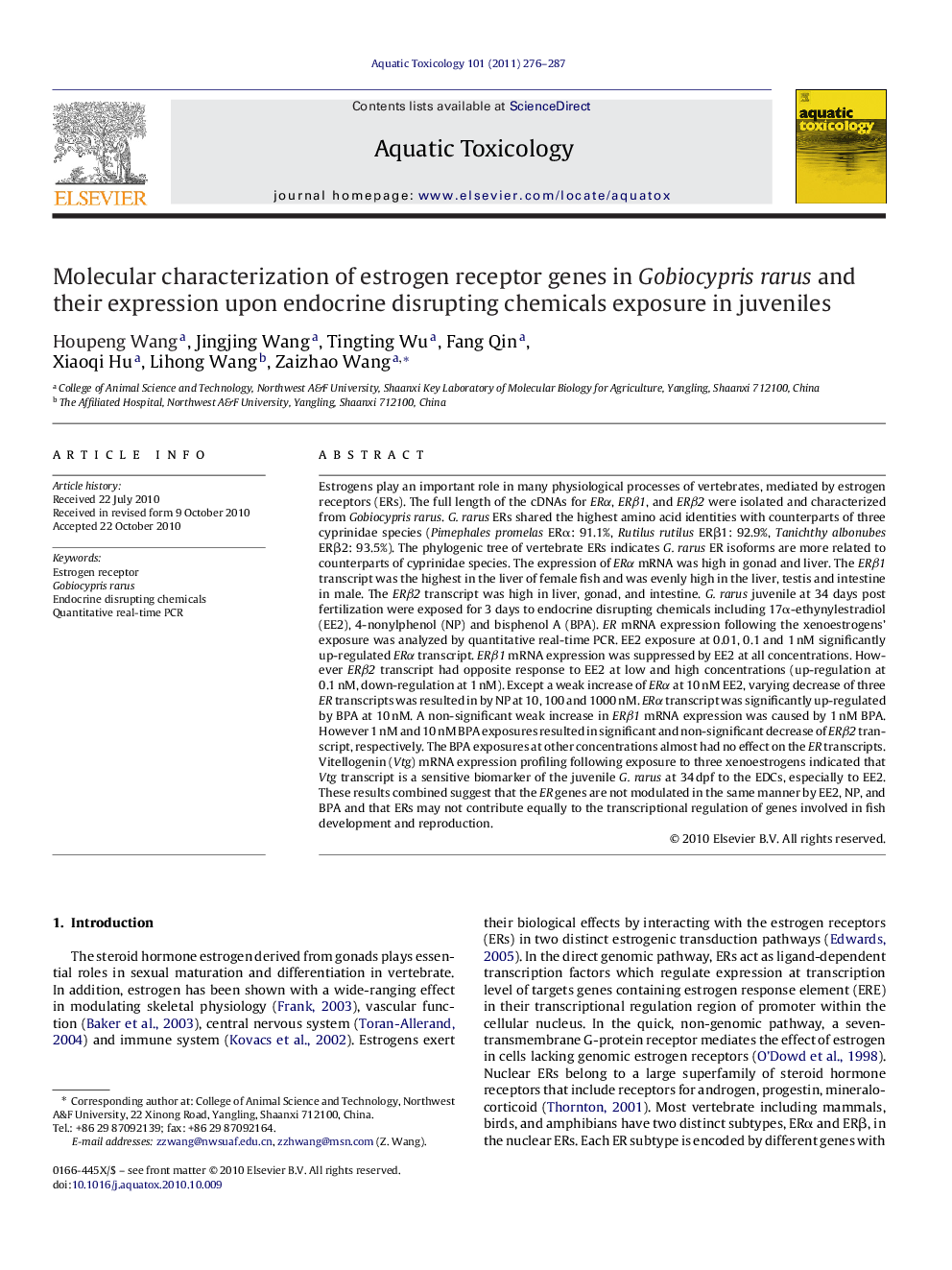| کد مقاله | کد نشریه | سال انتشار | مقاله انگلیسی | نسخه تمام متن |
|---|---|---|---|---|
| 4530117 | 1324682 | 2011 | 12 صفحه PDF | دانلود رایگان |

Estrogens play an important role in many physiological processes of vertebrates, mediated by estrogen receptors (ERs). The full length of the cDNAs for ERα, ERβ1, and ERβ2 were isolated and characterized from Gobiocypris rarus. G. rarus ERs shared the highest amino acid identities with counterparts of three cyprinidae species (Pimephales promelas ERα: 91.1%, Rutilus rutilus ERβ1: 92.9%, Tanichthy albonubes ERβ2: 93.5%). The phylogenic tree of vertebrate ERs indicates G. rarus ER isoforms are more related to counterparts of cyprinidae species. The expression of ERα mRNA was high in gonad and liver. The ERβ1 transcript was the highest in the liver of female fish and was evenly high in the liver, testis and intestine in male. The ERβ2 transcript was high in liver, gonad, and intestine. G. rarus juvenile at 34 days post fertilization were exposed for 3 days to endocrine disrupting chemicals including 17α-ethynylestradiol (EE2), 4-nonylphenol (NP) and bisphenol A (BPA). ER mRNA expression following the xenoestrogens’ exposure was analyzed by quantitative real-time PCR. EE2 exposure at 0.01, 0.1 and 1 nM significantly up-regulated ERα transcript. ERβ1 mRNA expression was suppressed by EE2 at all concentrations. However ERβ2 transcript had opposite response to EE2 at low and high concentrations (up-regulation at 0.1 nM, down-regulation at 1 nM). Except a weak increase of ERα at 10 nM EE2, varying decrease of three ER transcripts was resulted in by NP at 10, 100 and 1000 nM. ERα transcript was significantly up-regulated by BPA at 10 nM. A non-significant weak increase in ERβ1 mRNA expression was caused by 1 nM BPA. However 1 nM and 10 nM BPA exposures resulted in significant and non-significant decrease of ERβ2 transcript, respectively. The BPA exposures at other concentrations almost had no effect on the ER transcripts. Vitellogenin (Vtg) mRNA expression profiling following exposure to three xenoestrogens indicated that Vtg transcript is a sensitive biomarker of the juvenile G. rarus at 34 dpf to the EDCs, especially to EE2. These results combined suggest that the ER genes are not modulated in the same manner by EE2, NP, and BPA and that ERs may not contribute equally to the transcriptional regulation of genes involved in fish development and reproduction.
Journal: Aquatic Toxicology - Volume 101, Issue 1, 17 January 2011, Pages 276–287